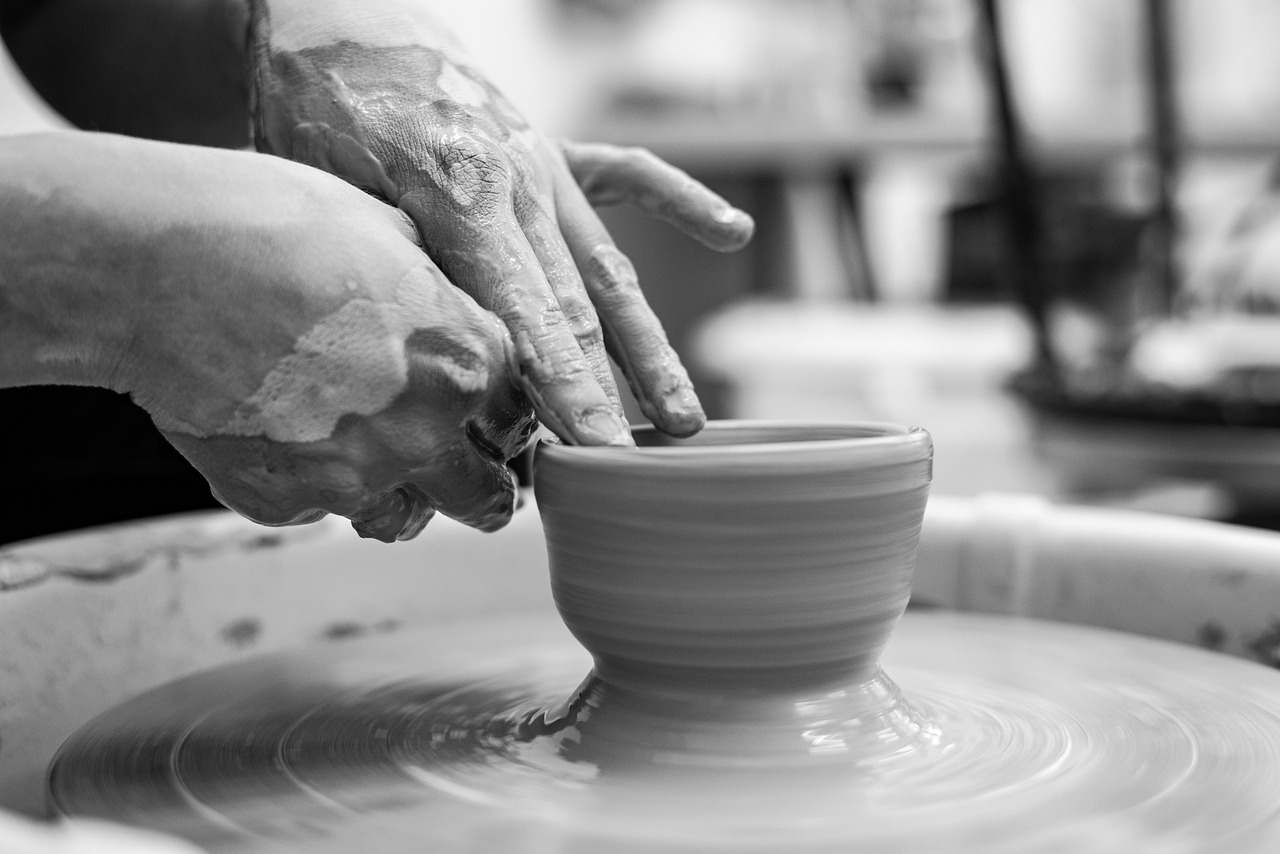Address
304 North Cardinal
St. Dorchester Center, MA 02124
Work Hours
Monday to Friday: 7AM - 7PM
Weekend: 10AM - 5PM
Address
304 North Cardinal
St. Dorchester Center, MA 02124
Work Hours
Monday to Friday: 7AM - 7PM
Weekend: 10AM - 5PM

First, the core process of the process
1. Material selection and sludge refining
Raw material selection: kaolin (white porcelain), clay (stoneware) or purple sand mud (purple sand ware), which needs to have a delicate texture and less impurities.
Sludge refining process:
Washing: After soaking the soil, the impurities are filtered and the fine slurry is precipitated.
Staleness: The mud is sealed and stored for several months to promote microbial fermentation and enhance plasticity.
Hammering: Repeatedly hammering and kneading to discharge bubbles by hand to form a “mud ball”, such as Jingdezhen’s “chrysanthemum kneading mud method”.
2. Hand molding techniques
Blank drawing (wheeling):
Place the mud dough on the turntable, dip your hands in water to control the speed, and shape it through lifting, pressing, expanding and other actions (such as bowls and bottles).
Key: Stable center of gravity and uniform thickness (usually 3-5mm).
Hand kneading:
Directly use small utensils (tea pets, ornaments) to retain the texture of fingerprints and reflect the natural texture.
Clay strip coiling:
The mud strips are stacked spirally (such as clay pots), and the joints are coated with mud to be glued, which is suitable for irregular shapes.
3. Decoration and glazing
Engraving Technique:
Engraving: Bamboo knife carved pattern (such as twig pattern).
Hollowing: Carved translucent patterns (commonly found in incense burners).
Glaze Applications:
Monochrome glaze: green glaze, Tianmu glaze, etc., dipping glaze method to ensure uniform coverage.
Underglaze color: cobalt material (blue and white) is painted on the green blank, and then covered with transparent glaze firing.
Overglaze color: Enamel color is painted after firing, and the second low temperature is fired (800 °C).
4. Firing utensils
Kiln loading:
The sagger supports the green body and prevents kiln ash pollution.
It is necessary to leave a fire channel to ensure that the heating is even.
Firing Stage:
Oxidation flame (600-900°C): Discharge water, carbonization of organic matter.
Reducing flame (1200-1300°C): Closing the kiln door, carbon monoxide makes the metal oxide develop color (e.g. celadon iron red).
Cooling: Cool down naturally for more than 48 hours to avoid cracking